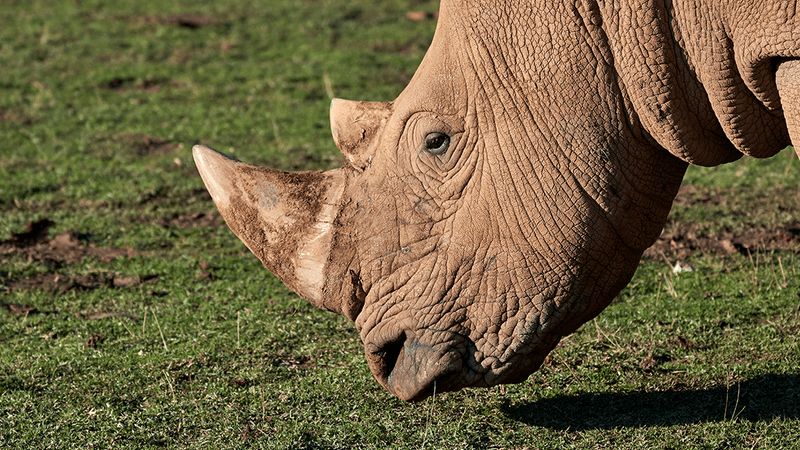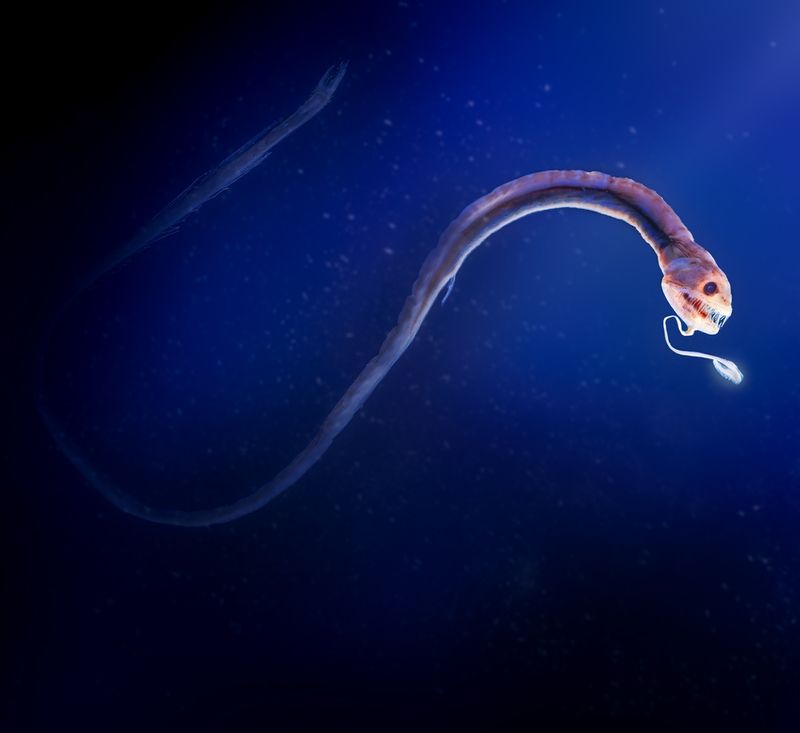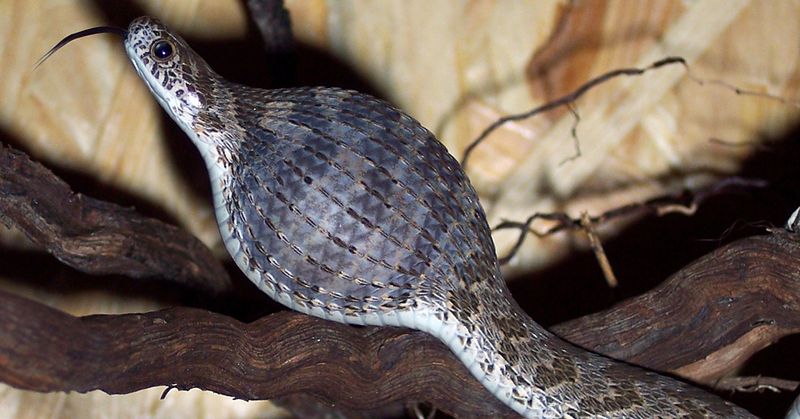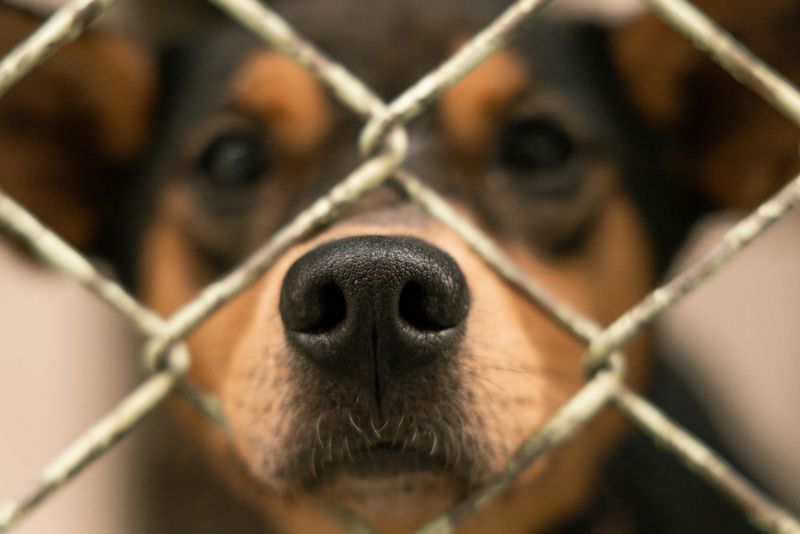Human-induced changes to animal populations are never more apparent than in the case of the northern white rhino. Only two female individuals remain anywhere in the world after poaching, armed conflict, and political instability decimated the population. So how do we go about saving a species on the very brink of extinction?
We spoke with Dr Suzanne Holtze from the Department of Reproductive Management at the Leibniz Institute for Zoo and Wildlife Research to find out all about the genetic plan to save the northern white rhino. Recorded as part of The Big Questions, IFLScience’s podcast, we discuss how the team are collecting eggs, storing embryos, and whether we’ll hear the pitter-patter of young white rhino toes again in our lifetime.
Most people think with only two female rhinos left in the world, that would be it for the species. But this is what you are trying to change, right?
Suzanne Holtze: Yes, that is correct. We still have some hope and this is thanks to my colleagues who have cryopreserved sperm from decades ago of males that for a long time are not on the planet anymore but their sperm is still cryopreserved in liquid nitrogen and is viable if you thaw it and can be used for fertilising outside of the last two females.
Have you collected the egg cells from these females or is that not a possibility?
SH: No we have actually collected egg cells of these females and of the older one. Unfortunately, we have never created an embryo, but the younger one is one of the best donors in white rhinos we have ever had, so she regularly supplies us with oocytes. We harvest them every three months approximately, to give her some time to recover and we regularly create embryos of her, which are currently also stored in liquid nitrogen and can be further on used for embryo transfers.
Would you then transfer these embryos that you have stored back into this female?
SH: No, both of these females unfortunately are not capable to carry a pregnancy to term. So the younger one, Fatu, has an issue with her uterus. She had some inflammation, or we don’t really know what happened, but in the ultrasound examinations, you can see clearly that her endometrium is cystically altered and is not capable to carry a pregnancy. While the older one was actually mated by quite heavy bulls and her Achilles tendons are not in good shape, so she could not carry the extra weight of her pregnancy, so we would not try to use her as a surrogate for embryos.
If you’re not going to use the last two rhinos that we have left, what is the future looking like for those embryos?
SH: Luckily, they have a very closely related sister taxon, the southern white rhino, and this is also an endangered species actually, but there’s many more of them still left on the planet and these southern white rhinos can serve, hopefully, as the surrogate mothers. There was even a report of a hybrid, so we are quite hopeful that the uterus will be compatible between the two. They are actually listed as a sub-species, not a different species, so they should be close enough to make it work.
With these embryos that you have, this genetic material has come from long-deceased male rhinos and sperm that you have collected from them. And we believe that you are trying to turn skin cells into sperm cells and that sort of thing.
SH: Yes, so one of these approaches to have a baby in the near future, which we really hope to achieve also because most likely northern white rhinos have their own vocalizational repertoire and they have their own culture, and the last two of their kind, we hope, will still teach the next generation of modern white rhinos how to behave as a northern white rhino. So, we really hope to keep this continuity to make this happen but in the long run, apparently, we only have these two right now because we retired the older one that never produced any embryos of quite advanced age so now we are only harvesting oocyte sets of the younger one. They are actually also mother and daughter so we do not lose so much genetic information by only focusing on the younger one. We managed to create embryos of her and different bulls that we have in our cryostorage. Still, this genetic diversity will be too limited to create a new population that’s sustainable in the long run. So we have to find other options, include more founder individuals into the gene pool, and one of them has come along with the finding of Yamanaka, which was actually prized with the Nobel Prize, that skin cells or any kind of differentiated cell can be transplanted back into the state of pluripotency. So in use, pluripotent stem cells can be created from a normal skin cell and this can, again, one of our core operation partners from Japan, Katsuhiko Hayashi, was capable to differentiate induced pluripotent stem cells again to create all sets in a petri dish.
Which is incredible.
SH: Which is incredible, yes. This is also possible with sperm. So far it has only worked in mice, but he has been starting to work with other cooperation partners from the Max Delbrück Centre, Sebastian Diecke and Vera Zywitza, on creating induced pluripotent stem cells of good quality of northern white rhinos and they have gone pretty far also in terms of developing gametes in the future, we hope it will work soon.
What does the future look like? You’re planning on implanting these embryos in the future into southern white rhinos – is that the goal?
SH: The plan would be to create these induced pluripotent stem cell lines on as many founders as we have in our storage and to create embryos from them, probably with the natural sperm and artificial oocytes or vice versa, and then to create a new generation of northern white rhinos by planting them into the uterus of a southern white rhino surrogate.
How many, realistically, could you make? Would it be enough to rebuild the population or…?
SH: I think so. There were some genetic studies from our cooperation partners from San Diego Zoo who found actually that the genetic diversity in these last cell lines we have still from northern white rhinos is actually at least as big, if not greater, than genetic diversity that is present currently in the living southern white rhino population, and southern white rhinos are actually doing quite well. There was a huge bottleneck at the beginning of the 19th century, or around 1900, they were hunted almost to extinction and they were actually one of the first conservation projects. The park was established to protect the last remaining of their kind and it’s estimated that maybe 20-50 individuals were only left to reproduce and now, nearly 20,000 remaining southern white rhinos are currently alive.
Big success story.
SH: Yes, big success story and apparently probably not all of these 20-50 animals or of these 50 animals contributed to the reproductive success, so it’s probably really only 20 founders that let this huge population increase again. They are faring quite well so we are optimistic that if we have at least the same amount of genetic diversity in the northern white rhinos they will be successful.
How soon do you reckon we could expect to hear the pitter-patter of a northern white rhino calf on the ground? Is it five years away? Ten years away?
SH: That is really hard to say. We are very hopeful that in the next few years we will achieve a successful pregnancy of a northern white rhino but this will be with natural gametes from collecting oocytes and fertilizing them with frozen sperm. The other approach is less easy to judge how long it will take because so far it has only been done in mice and now, the second species will hopefully be northern white rhinos. So, I would estimate that it's another five to 10 years at least to make this approach work, but it's really hard to judge, also because I’m not working directly in this field.
The northern and the southern white rhino were hunted so extremely. If we had more rhinos on the ground are we set up to protect them?
SH: I’m not quite convinced about this fact. Luckily, there’s enough habitat to bring them back to, that’s not the issue. There is enough land available, but they were actually hunted to extinction because of the high demand for rhino horn from Southeast Asia, from China, and Vietnam, and actually, it was mostly civil wars and uprisings that led to hunting the rhinos to probably sell the horn for buying weapons instead. So, it would be crucial to establish political stability in the areas where they belong to, which is Sudan and Congo. It’s quite important to make sure that if we bring them back to their natural habitat that they will be well protected. But I am quite hopeful that if this efficacious approach works that there will be enough attention internationally to really ensure that this will happen.
The two remaining rhinos are in Kenya at the moment. If you were to implant an embryo into a southern white rhino would that also be in Kenya?
SH: Yes, we agreed that at least the first one has to be born in Kenya and be socialised immediately with their conspecific, so with the last two northern white rhinos. This is the case. Actually, Kenya was never a natural habitat of the northern white rhino, it was just a safe place to bring them back. Actually, these two individuals came back from Dvůr Králové Zoo, a zoo in Czech Republic that was the only one ever that bred northern white rhinos in captivity and they decided at some point to bring four individuals back from Czech Republic to a safe place in Africa and they chose Kenya because it was a very good choice for security reasons.
The two females were both born in captivity in this zoo in the Czech Republic?
SH: Yes, exactly. They are first- and second-generation, so the younger one is a second-generation captive-born northern white rhino.
Wow. So, this is a huge ongoing project. Is it worth it for all this research?
SH: I think for one reason, we as humans are responsible for the loss of this species and we should be responsible also to try to reverse it. I think that these rhinos, in their natural habitat, they play a quite crucial [role] in the ecosystem. They are landscape architects; they are changing the landscape. They are opening up spaces and a lot of other species depend on these open grasslands that they create and follow up on them. I think if you can manage to protect them and bring them back to their wild habitat, we also save a lot of other species.
They have also proven to be protecting habitats from fire, because they open up areas, or they cut the grass very low, so it’s a kind of a barrier for fire to jump from one patch to the next, so they can really protect entire habitats. They also take care of water holes and open water holes, which many other species depend on. So, I think they have a huge impact and it’s worthwhile to bring them back.
So, by saving the northern white rhino, we’re saving much more of the habitat and positively benefitting other species in the area as well?
SH: Exactly, yes. I believe strongly that this will happen. As humans, we depend on functioning ecosystems and we do not often understand all of the implications one species has on the rest of the habitat, but for clean water, clean air, and also safety from novel emerging pathogens, we depend on functioning ecosystems and we should protect them if we can.
What are you looking into in the next year?
SH: We will continue to harvest oocytes of Fatu, the younger of the two last northern white rhinos, and create more embryos and at the same time we are, in European Zoos, creating embryos of southern white rhinos, which is, for once, it also serves the southern white rhino which is not reproducing well in captivity. It’s also an endangered species so it’s good to enhance the genetic diversity also in the captive population in European Zoos. We will first transfer a southern white rhino embryo to prove that we can successfully conduct the embryo transfer before we touch the northern white rhino embryos.
You're using the southern white rhinos as a little test to make sure it works with their genetic information before you risk the precious northern white rhino?
SH: Yes, kind of. But at the same time, we learn something for the southern white rhinos as well, so it will serve them as it will serve the northern white rhinos.
Could this concept be applied to other species outside of rhinos?
SH: Yes indeed. There are quite a lot of endangered species in the world and these technologies that we are developing can be useful for many of them. Of course, it's not the way it should usually go, we should rather prevent animals reaching this stage or extinction or risk of extinction than to do these last resort measures to save them. But for example, there are two also very endangered rhino species on the planet, which are the Sumatran rhino and the Javan rhino, both of them in Indonesia and they have dwindled also to populations of 30-70 individuals, so way too small to be self-sustainable and they are quite fragmented and occur in different forests. So, it would be crucial for them also to apply these technologies to enhance the populations enough to create viable populations again.
Are there people out there collecting those egg cells and those sperm cells from the remaining population at the moment or is that something that you would look to do in the future?
SH: That is something we are looking to do. We already examined some Sumatran rhinos in the last year but this is a very political thing, many authorities have to agree to this but we are very hopeful we can also apply this to the Sumatran rhino in the near future.
Incredible. A species really, really on the brink of extinction but in 10 years, potentially, we could have northern white rhinos living on our planet again.
SH: Yes, we hope that this will be the case. We are doing our very best to make it happen.
Is there anything else that you would like to mention?
SH: Maybe one thing is that all of this research of course has a lot of ethical implications. So, we have one ethical researcher from Italy on board, Professor Barbara de Mori from Padova University, and she is taking care of a lot of emerging ethical aspects, so to answer questions. So to answer the question of how is it rectified to maybe compromise the health or disturb an individual animal of the species in order to save their population or their kind?
Also, there are emerging criticisms about should we use so much money, which is actually not so much money we are using, to bring back one single species instead of protecting habitats, and our answer to this would be that we are actually using money of the German Research Ministry, which otherwise would never go into species conservation, so we are actually drawing new funds to conservation which would not usually be used for this kind of research. So, there are a lot of emerging aspects on ethics that we are trying to deal with in advance and to include the public and inform the public well of what we are doing and why we are doing it and that we are thinking through every step and every consequence or risk we are running with the individuals and with the populations.
We suppose you can’t ask a southern white rhino to consent to being a surrogate for the northern white rhino. They don’t know that they’re saving their subspecies, so it’s a gray area. This is the next best option, isn’t it?
SH: Yes exactly. This is one of the aspects but we think actually, after weighing all the pros and cons that this is a fair option, that the southern white rhinos carry well enough that few individuals can carry until we have a viable population of northern white rhinos again, carry to term northern white rhinos as well.
What age does a northern white rhino become able to breed?
SH: For the southern white rhino the age they usually give their first birth is five to six years. They have a gestation time of 16 months, so they were probably at the age of three to four, start to have their first cycles, and start breeding. For the males, I think it will be more or less around the same time, four, five, six years.
And is that the end goal, to have a self-sustaining northern white rhino population that would come back?
SH: Definitely. We do not want to eternally help them to recreate. We want them to be happy and self-sustaining and out in the wild again without any human interventions needed.
Amazing. We can’t wait to hear the press release when you announce that you have successfully bred a northern white rhino calf.
SH: I can’t wait either, but it’s science and we don’t know, we are dealing with a lot of unknowns and it can take more time than we expect, but I am quite confident we now have 24 embryos of the northern white rhino female stored in liquid nitrogen and they could be potentially viable for several hundred years in the liquid nitrogen. So, we have a lot of time and even if it takes more years than we expect, I am quite confident we will succeed in the end.
This interview was part of IFLScience's The Big Questions and has been edited for length and clarity. Subscribe to our newsletter so you don’t miss out on the biggest stories each week.




